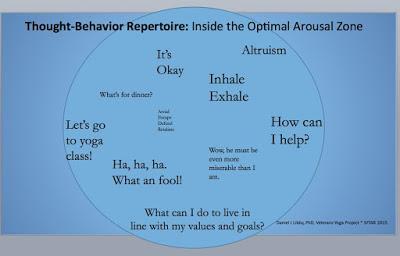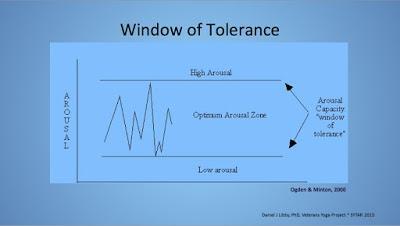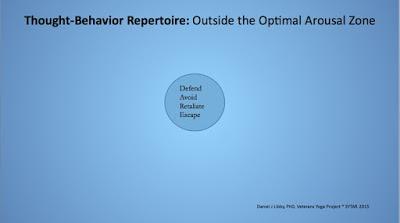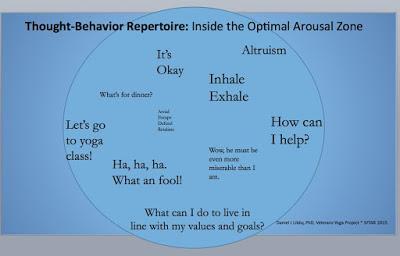 Last Thursday in my post Re-Patterning Your Nervous System, I described something intriguing that I’d learned from Dan Libby, who teaches yoga to veterans (see veteransyogaproject.org), which was that in stress mode our thoughts narrow and become limited to fight or flight strategies, while when we are calmer, our thoughts are more expansive, and therefore include a much wider range of possibilities. I quoted him saying:
Last Thursday in my post Re-Patterning Your Nervous System, I described something intriguing that I’d learned from Dan Libby, who teaches yoga to veterans (see veteransyogaproject.org), which was that in stress mode our thoughts narrow and become limited to fight or flight strategies, while when we are calmer, our thoughts are more expansive, and therefore include a much wider range of possibilities. I quoted him saying:"The basic gist is that regulating our autonomic nervous system, which really means activating the more newly evolved part of the parasympathetic nervous system via the vagus nerve, allows for an expansion of your thought-behavior repertoire. Instead of having a limited, narrow, tunnel-vision, like we do when our sympathetic nervous system is dominant, we have more cognitive and behavioral options available to navigate our world."
I also wistfully said that I wished I had copies of the figures he used in the presentation I had attended. After I wrote that, I thought to myself, duh, how about just asking him, Nina? And, guess what? He sent them along right away. So I today I’m pleased to say I can share them with you. And luckily I took some notes during his presentation so I can explain them a bit to you as they contain some rather technical terms.
First, Dan introduced the concept of “window of tolerance.” This is a level of arousal ("arousal" refers to the intensity of the Stress or Fight or Flight response) that is appropriate to the environment. While, for example, for a soldier, a very high level of arousal is appropriate in an actual battle, that same level is not appropriate while you’re stuck in a traffic jam or working at the office. This figure conveys the basic levels of arousal.
 Now we have figures that illustrates the thought-behavior repertoire associated with an arousal level outside the window of tolerance and two within the window. When the arousal level is "optimum," your thoughts and behavior possibilities expand, until it is possible to consider altruistic possibilities and living in line with your basic values and goals. (I like how in that illustration, some of the thoughts are literally “out of the box.”)
Now we have figures that illustrates the thought-behavior repertoire associated with an arousal level outside the window of tolerance and two within the window. When the arousal level is "optimum," your thoughts and behavior possibilities expand, until it is possible to consider altruistic possibilities and living in line with your basic values and goals. (I like how in that illustration, some of the thoughts are literally “out of the box.”)

 Dan concluded his presentation by discussing how yoga can help people move into their optimal arousal zone, something I hope he’ll be writing about for us in the future (yeah, while I was at it, I asked him to write a post for us).
Dan concluded his presentation by discussing how yoga can help people move into their optimal arousal zone, something I hope he’ll be writing about for us in the future (yeah, while I was at it, I asked him to write a post for us).Subscribe to Yoga for Healthy Aging by Email ° Follow Yoga for Healthy Aging on Facebook ° Join this site with Google Friend Connect

